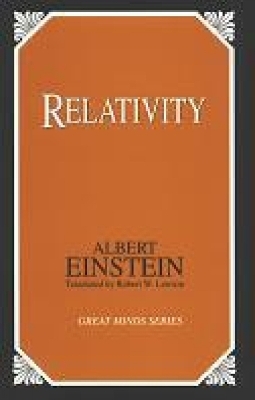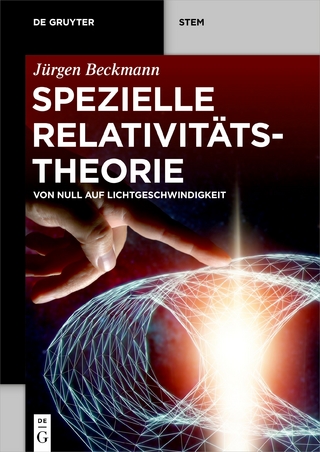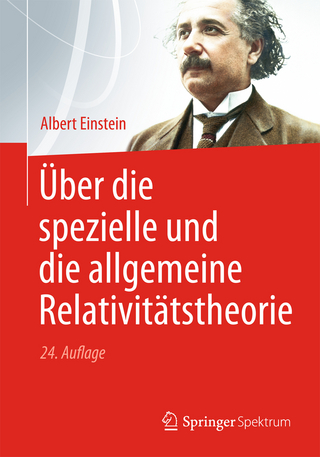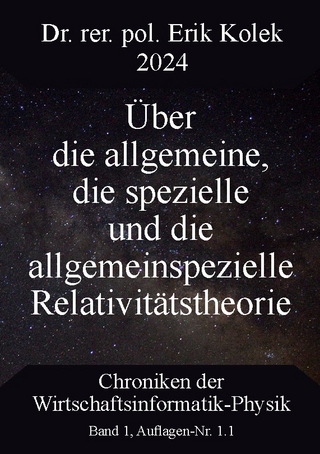
Relativity
Prometheus Books (Verlag)
978-0-87975-979-7 (ISBN)
- Keine Verlagsinformationen verfügbar
- Artikel merken
Albert Einstein (1879-1955), pacifist and humanitarian, has been universally acclaimed the greatest theoretical physicist who ever lived. Adapting the old laws of physics to Einstein's space-time resulted in "relativistic" physics. He, more than anyone else, realized that every physical theory is largely an invention of the mind, a mathematical model used to "mimic" a certain domain of experimental facts. Einstein's work on relativity is indeed the greatest contribution to the philosophy of science.
It has long been thought that only a handful of scientists could comprehend Einstein's theory of relativity. But in this book the inventor himself explains both the special and the general theories in terms that the layman can understand.
ALBERT EINSTEIN was born in Ulm, Germany, on March 14, 1879. An indifferent student, Einstein gave little hint of the great scientist he would become: he found school merely monotonous; indeed, one of his teachers at the Polytechnic Institute of Zurich, Switzerland, where Einstein enrolled in 1896, later described him as "a lazy fellow, [who] never cared for mathematics." Following graduation in 1900, Einstein worked for two years as a private teacher before being hired by the Swiss Patent Office at Bern. In 1903 Einstein married Mileva Maric, who had also been a student at the Polytechnic. Following the birth of two sons, the couple divorced in 1919. The undemanding job at the Patent Office left Einstein time to give birth to those burgeoning ideas that would change physics forever. In 1905 he published the first of his revolutionary papers on relativity (the second would follow a decade later), as well as groundbreaking papers on Brownian motion and the photo--electric effect. Yet, despite this prodigious output, Einstein could not leave the Patent Office until 1909, when he was offered an associate professorship at the University of Zurich. From Zurich Einstein went to spend a year at the German University of Prague, and two years at the Zurich Polytechnic. In 1914 he moved to Berlin, where he became professor and later director at the Kaiser Wilhelm Institute of Physics. Einstein continued to work unstintingly on quantum mechanics (publishing two great papers in 1924-25) and a unified field theory. In the 1920s, Einstein, witnessing the growing anti-Semitism around him, began to espouse Zionism. In 1933, while Einstein was visiting the United States with his second wife, Elsa, Adolf Hitler ascended to power. Effectively barred from Germany because he was a Jew, Einstein accepted a professorship at the Institute for Advanced Study in Princeton, and became a naturalized American citizen in 1940. From his home in Princeton, Einstein used his fame and influence to rescue colleagues still trapped in Germany. Fearful that the Nazis would develop an atomic bomb, Einstein wrote to President Franklin Delano Roosevelt in 1939 in order to encourage him to begin the United States on a program of uranium research. After World War II, however, Einstein would work for nuclear disarmament. In 1952, in recognition of his devotion to the causes of peace and Zionism, Einstein was offered, but refused, the presidency of Israel. He died in Princeton, New Jersey, on April 18, 1955, after a long illness. Albert Einstein published works of interest to the layperson: The Nature of Relativity (1923), Builders of the Universe (1932), Why War? (with Sigmund Freud) (1933), The World As I See It (1934), and Out of My Later Years (1950).
| Erscheint lt. Verlag | 1.6.1995 |
|---|---|
| Reihe/Serie | Great Minds Series |
| Verlagsort | Amherst |
| Sprache | englisch |
| Maße | 152 x 229 mm |
| Gewicht | 454 g |
| Themenwelt | Naturwissenschaften ► Physik / Astronomie ► Relativitätstheorie |
| ISBN-10 | 0-87975-979-8 / 0879759798 |
| ISBN-13 | 978-0-87975-979-7 / 9780879759797 |
| Zustand | Neuware |
| Informationen gemäß Produktsicherheitsverordnung (GPSR) | |
| Haben Sie eine Frage zum Produkt? |
aus dem Bereich


